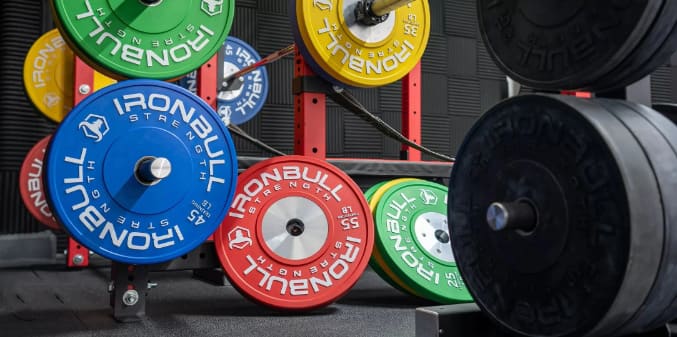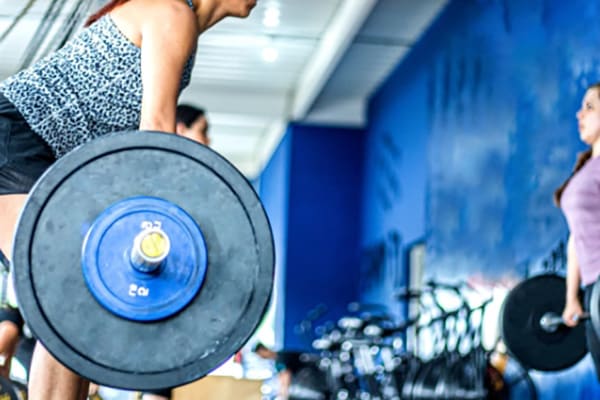The Importance of Weight Plates in Strength Training
Resistance training is a crucial component of any effective workout regimen, and one of the most important tools for achieving your strength goals is the weight plate. Whether you’re a beginner or an experienced lifter, weight plates are essential for building muscle and increasing strength.
Weight plates, when combined with barbells, form the foundation of many strength-training exercises. The type and weight of the plates you use can significantly impact your progress and the effectiveness of your workouts. This guide will explore how weight plates influence your training and help you select the best ones for your home gym.
Understanding Weight Plates
For those new to the gym, weight plates are the heavy, disc-shaped objects that are loaded onto the ends of barbells. They allow you to adjust the weight you’re lifting, enabling you to perform a wide range of resistance training exercises. But weight plates aren’t just for barbells; they can also be used on their own for various muscle isolation and total-body exercises.
Types of Weight Plates
Weight plates come in different sizes, typically ranging from 2.75 pounds to 55 pounds. However, in some cases, you might encounter plates that weigh up to 100 pounds. In most gyms, the standard 45-pound plate is commonly used, and when combined with a 45-pound barbell, this totals 135 pounds. Here’s a breakdown of common weight configurations:
- One plate on each side: 135 pounds
- Two plates on each side: 225 pounds
- Three plates on each side: 315 pounds
- Four plates on each side: 405 pounds
These numbers reflect the total weight you’re lifting, including the barbell. The standard 45-pound plates are based on the metric system, which is why they aren’t rounded to an even 50 pounds.
Varieties of Weight Plates
At Hongxing Fitness, we offer two main types of weight plates, each with unique characteristics:
Standard Weight Plates:
These plates are popular in home gyms and are typically made of steel or cast iron. They are compatible with various types of bars, including adjustable dumbbell handles and aerobic bars. Standard weight plates are usually smaller than bumper plates or Olympic plates and are an affordable option for general strength training.
Bumper Plates:
Bumper plates range from 10 to 55 pounds and feature a metal core with a thick rubber coating, making them durable enough to drop from overhead without damaging the plate or the floor. Unlike standard plates, bumper plates are all the same diameter, regardless of weight. They are ideal for Olympic lifts and floor-based barbell routines.

Why Weight Plates Matter
Weight plates are a cornerstone of any strength training routine, offering a range of benefits:
- They enable a wide variety of exercises, targeting multiple muscle groups including the shoulders, chest, arms, back, and legs.
- Weight plates are versatile, supporting exercises like squats, deadlifts, and presses.
- You can use them without a barbell for isolation exercises that help build muscle and strength.
- Weight plates are durable, easy to maintain, and simple to store, making them perfect for home gyms.
Barbells vs. Dumbbells: Which to Use?
Both barbells and dumbbells are essential for a balanced strength training program, but they serve different purposes:
Barbells:
Barbells, combined with weight plates, are excellent for building overall strength and muscle mass. A standard barbell typically weighs 45 pounds and can hold multiple plates to achieve your desired lifting weight. When using a barbell, you can lift more weight than with dumbbells, making it ideal for exercises that require stability.
Dumbbells:
Dumbbells, whether fixed or adjustable, are perfect for muscle isolation and toning exercises. They allow for greater range of motion and unilateral exercises, which can correct muscle imbalances and enhance coordination.
Exercises Using Weight Plates Alone
You can also perform various exercises using just the weight plates:
- Front Shoulder Raise: Hold the plate in front of you and lift it from your legs to shoulder height.
- Truck Driver: Hold the plate like a steering wheel and rotate it back and forth.
- Floor Press: Lying on your back, press the plate from your chest towards the ceiling.
- Plate Push-Ups: Place a plate under each hand and perform push-ups, sliding the plates apart as you lower your chest.
Why Weight Plates Are Expensive
Weight plates can be costly due to several factors:
Materials:
Weight plates are made from dense metals like iron or steel, often coated with rubber or urethane for durability.
Construction:
Plates are cast with precision to prevent faults that could lead to cracking.
Shipping Costs:
The heavy and bulky nature of weight plates makes them expensive to ship, adding to the overall cost.
Purchased in Pairs:
Weight plates are often sold in pairs, and equipping a full home gym can require multiple sets of different weights, increasing the total expense.
Getting the Best Value for Weight Plates
At Hongxing Fitness, we offer high-quality weight plates at competitive prices, with the added benefit of free shipping. When choosing weight plates, consider the following:
- Training Priorities: Choose plates based on your specific training goals, whether you’re focusing on powerlifting, bodybuilding, or general fitness.
- Budget: Invest in a variety of weights to allow for progression in your training.
- Durability: Ensure your plates are built to withstand regular use.
- Warranty: Look for plates that come with a warranty, such as the one-year warranty offered by Hongxing Fitness.
Whether you’re looking for standard weight plates, bumper plates, or specialty plates, Titan Fitness provides everything you need to create a well-equipped home gym. With the right selection of weight plates, you’ll be well on your way to reaching your strength training goals.
Post time: 08-19-2024




